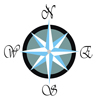Safe Boating Capacity that is…
 As a boat operator you should never take a boat out with too many people or too much gear on board. If you’re overloaded it’s harder to control your boat and you’re at a higher risk to capsize.
As a boat operator you should never take a boat out with too many people or too much gear on board. If you’re overloaded it’s harder to control your boat and you’re at a higher risk to capsize.
Boat capacity terms, loading and capacity, relate to…
- Weight of the people,
- Weight of the fuel,
- and the weight of the gear.
The amount that can safely be carried on the boat is called the gross load capacity of your boat. If you load more than it was designed to handle, your boat may become unstable.
The safe load of a boat in terms of people depends on a number of boat characteristics…
- Including hull volume and dimension.
- The weight of the engine.
- If an outboard, how is it mounted.
 The number of seats in a boat is not an indication of the number of people it can safely carry. Capacity plates are usually found on the inside transom, or next to the helm station.
The number of seats in a boat is not an indication of the number of people it can safely carry. Capacity plates are usually found on the inside transom, or next to the helm station.
The U.S. Coast Guard safely standard covering Display and Capacity information applies to manufacturers of monohull boats less than 20 feet in length, except sailboats, canoes, kayaks and inflatables. Capacity plates can generally be found on the inside transom, or next to the helm station. Capacity plates should never be removed, altered, or tampered with. The standard became effective for applicable boats manufactured of monohull boats less than 20 feet in length, except sailboats, canoes, kayaks and inflatables.
Calculate Your Safe Boating Capacity
If your boat is less than 20 feet in length with no capacity plate, use the following to calculate the number of persons (weighing 150 lbs. each, on average) the boat can safely carry.
Boat length (ft) x boat width (ft) = no. of people
15
For example, if your boat is 30 feet long and 10 feet wide, the equation is:
30 ft x 10 ft = 20 people
15
Courtesy of : BoatUS Fountation www.boatus.com



